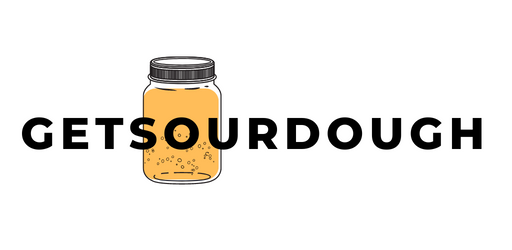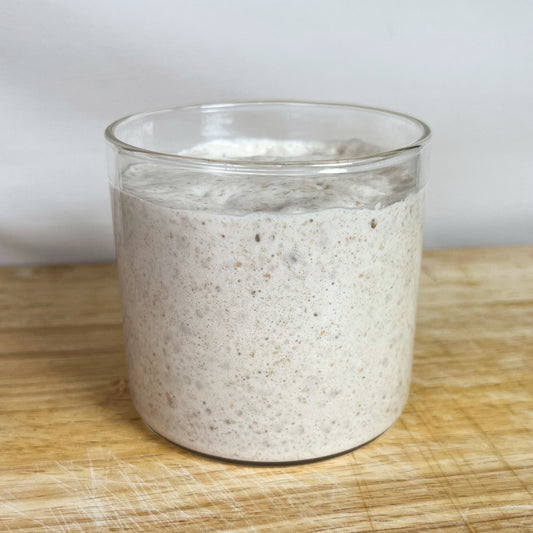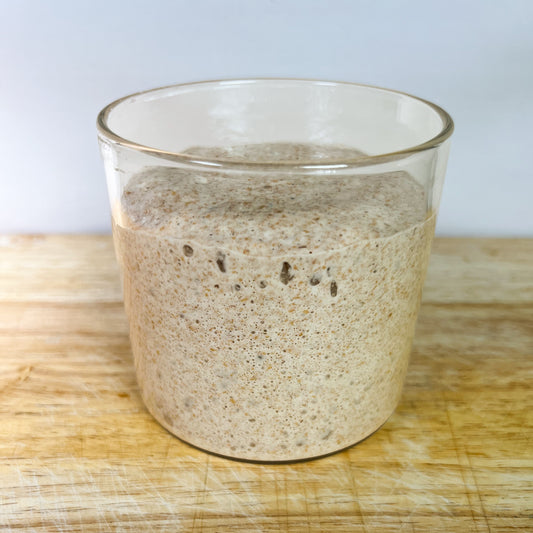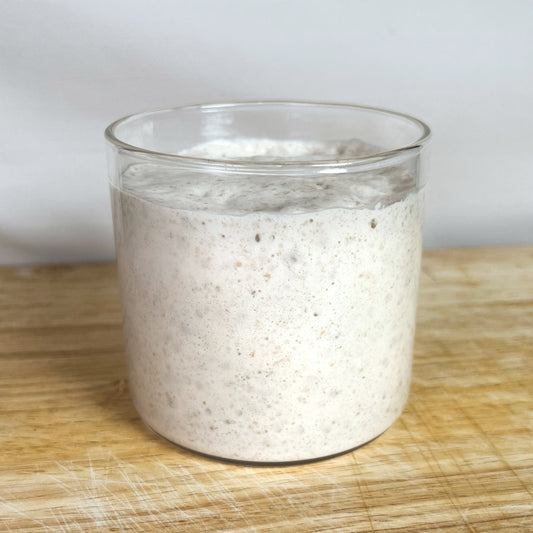Bread Lames vs. Other Scoring Tools: Pros and Cons
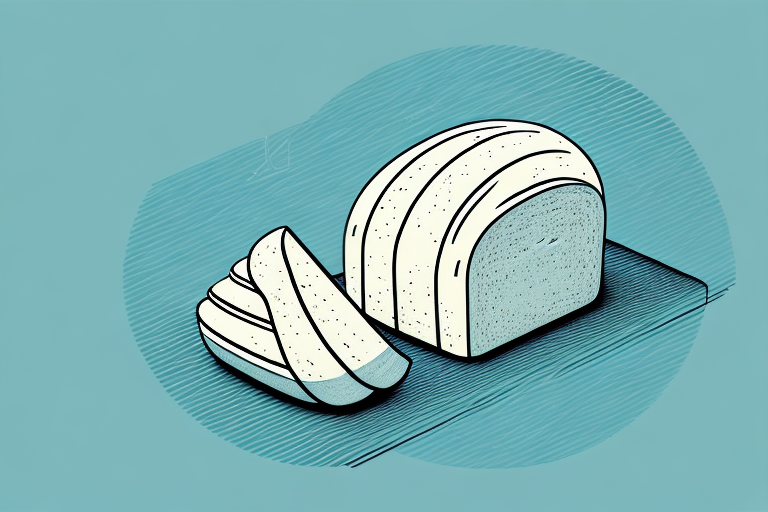
Scoring is an essential technique in bread making that allows dough to expand and rise properly in the oven. Creating the perfect score requires the right tools and skills. When it comes to bread scoring tools, the two main options are bread lames and alternative scoring tools. Each type of tool has its own set of pros and cons that should be considered before making a purchase.
Understanding Bread Scoring Tools
Before we dive into the pros and cons of bread lames and alternative scoring tools, let's first understand the importance of bread scoring and the types of bread scoring tools available.
The Importance of Scoring Bread
Scoring involves making shallow cuts on the surface of the dough before baking. This process helps dough to rise evenly by allowing trapped gasses to escape through the cuts. It also adds aesthetic appeal to the finished bread by creating unique patterns on the crust. Most importantly it ensures that your bread has the space and heat to cook evenly through out.
Scoring bread is an art form that has been practiced for centuries. In fact, bakers in ancient Egypt and Rome used to score their bread with intricate designs as a way to identify their loaves and differentiate them from others.
Today, scoring bread is still an important aspect of bread making. It not only helps with the rise and appearance of the bread, but it also allows for the release of excess moisture, which can result in a crispier crust.
Types of Bread Scoring Tools
There are various types of bread scoring tools available, including knives, razors, and scissors. These tools come in different designs, sizes, and materials, all of which affect their effectiveness and ease of use.
One popular bread scoring tool is the lame, which is a long, thin blade attached to a handle. The blade is curved, allowing for better control and precision when scoring the dough. Lames are often made with stainless steel or carbon steel blades and come in different styles, such as straight or serrated.
Another bread scoring tool that has gained popularity in recent years is the grignette. Similar to a lame, a grignette is a small, handheld tool with a curved blade. However, the blade on a grignette is replaceable, allowing for easy maintenance and sharpening.
Some bakers even use household items such as scissors or serrated knives to score their bread. While these tools may not be specifically designed for bread scoring, they can still be effective if used correctly.
Ultimately, the type of bread scoring tool you choose will depend on your personal preference and level of experience. It's important to choose a tool that feels comfortable in your hand and allows you to score the dough with precision and control.
Bread Lames: Pros and Cons
A bread lame is a scoring tool that consists of a handle and a thin, curved blade. Many bakers prefer lames over other scoring tools for several reasons.
Scoring bread is an important step in the bread-making process. The purpose of scoring is to control where the bread expands while baking, allowing it to rise evenly and preventing it from cracking. Scoring also adds a decorative touch to the loaf, making it visually appealing.
Pros of Using Bread Lames
Bread lames are popular tools for scoring bread because the curved blade allows bakers to make precise cuts while exerting minimal pressure on the dough. This is especially important when working with delicate dough, such as sourdough, which can easily deflate if handled too roughly. The sharpness of the blade also helps create a clean and consistent score, resulting in a more evenly baked loaf. Additionally, many bakers find lames to be aesthetically pleasing and enjoy the traditional look and feel they add to their bread-making process.
Another advantage of using a bread lame is the variety of designs that can be created. Bakers can experiment with different patterns and shapes, adding a unique touch to their bread. This can be especially fun during holidays or special occasions, where bakers can create festive designs.
Cons of Using Bread Lames
While bread lames offer many advantages, there are some cons worth considering. Lames tend to be more expensive than other scoring tools, making them a less accessible option for some bakers. Additionally, the curved blade design can make cleaning the tool more challenging, and improper care can lead to rust and other durability issues.
It is important to properly care for your bread lame to ensure it lasts a long time. This includes cleaning it after each use and storing it in a dry place. Some bakers choose to oil their lames to prevent rust, while others prefer to let them develop a patina over time.
Overall, bread lames can be a valuable tool for bakers who are looking to take their bread-making to the next level. While they may require a bit of an investment, the precision and aesthetic appeal they offer can be worth it in the end.
Other Scoring Tools: Pros and Cons
When it comes to scoring bread dough, there are many tools that bakers can choose from. While bread lames are the most popular option, there are also alternative scoring tools that can be used. These include serrated knives, straight blade razors, and scissors. Each tool has its own unique set of pros and cons that bakers should consider.
Pros of Using Alternative Scoring Tools
One of the main advantages of using alternative scoring tools is that they tend to be less expensive than bread lames. This makes them a more budget-friendly option for bakers who are just starting out or who don't want to invest a lot of money in a scoring tool. Additionally, some bakers may find that straight blades are easier to clean and maintain than curved blades. This can be particularly important for bakers who use their scoring tool frequently and want to keep it in good condition.
Cons of Using Alternative Scoring Tools
While alternative scoring tools can be a good option for some bakers, they do have some drawbacks that should be considered. One of the biggest challenges with using straight blades or other alternative tools is that they can be more difficult to use than bread lames. Straight blades require a bit more pressure to create a score, which can lead to uneven or imprecise cuts that affect the rise of the dough. This can be frustrating for bakers who are new to bread making or who are trying to achieve a specific look with their bread.
Another potential downside of using alternative scoring tools is that they often lack the aesthetic appeal of bread lames. Bread lames are designed specifically for scoring dough, and they have a unique look that can add to the overall appearance of the bread. While alternative tools can still create a functional score, they may not have the same visual impact as a well-designed bread lame.
In conclusion, while there are many different scoring tools that bakers can choose from, it's important to consider the pros and cons of each option before making a decision. Alternative scoring tools like straight blades and scissors may be less expensive, but they can be more challenging to use and may not have the same aesthetic appeal as bread lames. Ultimately, the best scoring tool for you will depend on your personal preferences and baking needs.
Comparing Bread Lames and Other Scoring Tools
Scoring bread is an important step in the bread-making process that allows the dough to expand properly in the oven. While there are many scoring tools available, two of the most popular options are bread lames and alternative scoring tools. Here's a breakdown of how the two types of tools compare in terms of effectiveness, ease of use, and price.
Effectiveness in Scoring
Bread lames, also known as bread scoring knives, are specifically designed for scoring bread. They typically feature a curved blade that allows for greater control and precision when making cuts in the dough. This design also helps to prevent the dough from tearing or dragging, resulting in a more even rise and a better-looking loaf.
Alternative scoring tools, such as straight razor blades or serrated knives, can also be effective at scoring bread. However, they may require more skill and practice to achieve the same level of precision as a bread lame.
Ease of Use
When it comes to ease of use, the choice between a bread lame and an alternative scoring tool really comes down to personal preference. Some bakers may find the curved blade of a bread lame easier to manoeuvre, while others may prefer the feel of a straight blade. It's important to choose a tool that feels comfortable and natural to use, as this will make the scoring process easier and more enjoyable.
Price and Availability
One potential downside to bread lames is that they can be more expensive than alternative scoring tools. However, they are still relatively affordable and widely available online and in kitchen supply stores. Alternative scoring tools, such as razor blades or serrated knives, are often more readily available and may be a more budget-friendly option.
Ultimately, the choice between a bread lame and an alternative scoring tool comes down to personal preference and budget. Both types of tools can be effective at scoring bread, so it's important to choose a tool that feels comfortable and natural to use.
Tips for Successful Bread Scoring
Scoring bread is an art form that takes practice and patience. It involves making precise cuts in the dough to allow for proper expansion during baking. A well-scored loaf will have an even rise, a beautiful crust, and an airy crumb. Here are some tips to help you achieve the perfect score:
Full Guide: Sourdough Bread Scoring for Beginners: Step-by-Step Guide with a Bread Lame
Choosing the Right Tool for Your Needs
There are several tools you can use to score bread, including bread lames, razor blades, scissors, and even serrated knives. Each tool has its own advantages and disadvantages, so it's important to choose one that suits your needs. Bread lames, for example, are designed specifically for scoring bread and have a curved blade that allows for greater control and precision. On the other hand, a razor blade may be more readily available and can still produce great results.
Consider your budget, skill level, and personal preferences when selecting a tool. Remember, the ultimate goal is to create a score that allows the dough to rise evenly.
Proper Scoring Techniques
When scoring bread, it's important to use a light and confident touch. The blade should be held at a shallow angle to the dough's surface, and cuts should be made quickly and decisively. This will help prevent the dough from tearing or deflating. You can also experiment with different scoring patterns to create unique designs on your bread.
Another important factor to consider is the timing of your scoring. It's best to score the dough just before it goes into the oven, as this will give it time to rise properly.
Maintaining Your Scoring Tools
To ensure the longevity and effectiveness of your scoring tool, be sure to properly clean and store it after each use. Follow the manufacturer's instructions for care and maintenance, and replace blades as needed. A dull blade can make scoring more difficult and may even damage the dough.
Additionally, it's a good idea to keep your scoring tool in a safe place where it won't get damaged or lost. Many bakers like to keep their bread lames in a protective sheath or leather pouch.
By following these tips, you'll be well on your way to scoring beautiful, delicious loaves of bread that are sure to impress.
Conclusion
Whether you choose a bread lame or an alternative scoring tool, the key to successful bread scoring lies in proper technique and practice. Take the time to experiment with different tools and find the one that feels most comfortable and effective for you. Remember, scoring is an essential step in bread making, and the right tool can make all the difference in achieving a beautifully risen and deliciously baked loaf of bread.
